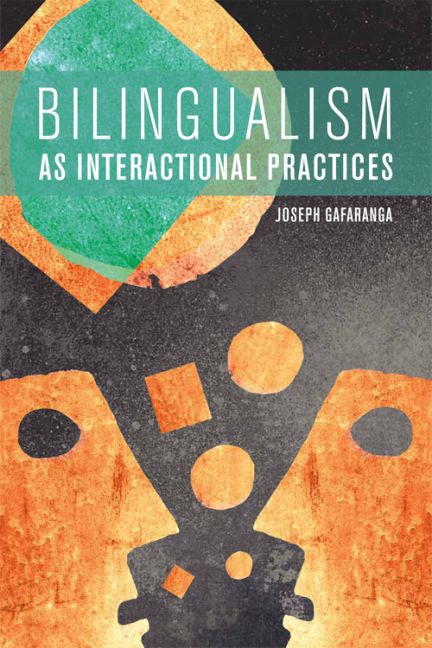Book contents
- Frontmatter
- Contents
- List of illustrations
- Acknowledgements
- Transcription conventions
- 1 Introduction
- 2 The rehabilitation of code-switching
- 3 An inductive perspective on bilingualism as interactional practices
- 4 Language choice and speech representation in bilingual interaction
- 5 Language choice and conversational repair in bilingual interaction
- 6 Language choice and appositive structures in written texts in Rwanda
- 7 Summary and conclusion
- References
- Index
7 - Summary and conclusion
Published online by Cambridge University Press: 26 April 2017
- Frontmatter
- Contents
- List of illustrations
- Acknowledgements
- Transcription conventions
- 1 Introduction
- 2 The rehabilitation of code-switching
- 3 An inductive perspective on bilingualism as interactional practices
- 4 Language choice and speech representation in bilingual interaction
- 5 Language choice and conversational repair in bilingual interaction
- 6 Language choice and appositive structures in written texts in Rwanda
- 7 Summary and conclusion
- References
- Index
Summary
The study of bilingualism, and especially of language alternation, has been undertaken against the background of very negative attitudes towards bilingualism in general and bilingual language use in particular. Language alternation was seen mostly as a sign of lack of competence in either of the languages involved. Speakers took part in CS only because they were unable to sustain a conversation in one or the other of the languages involved. Today, however, the situation has improved a great deal, thanks to the research effort over the last few decades, among other things. Previously seen as a handicap, bilingualism is currently considered, in some quarters at least, as an advantage. From being regarded as a random phenomenon and as a sign of inadequate competence in the languages involved, bilingual language use is currently seen as an interactional resource and as a sign of advanced competence in the languages involved. According to some researchers, language alternation contributes to the negotiation of social relationships in interaction and, for some others, it contributes to the organisation of bilingual talk in interaction. Thus, to put it in a nutshell, given where it all started, the main achievement of the discipline so far is to have more or less successfully challenged previously held assumptions and to have rehabilitated bilingualism. Now that this rehabilitation has largely been achieved, the study of bilingualism, as a discipline, faces an entirely new problem: how can it continue to be relevant and interesting? The overall aim of this book has been to contribute to this important issue that the study of bilingualism faces.
The study of bilingualism can be, and indeed has been throughout its history, undertaken from various disciplinary perspectives (e.g. grammatical perspective, psycholinguistic perspective, socio-interactional perspective, etc.). For practical reasons, this book has focused only on the socio-interactional dimension. In this dimension, language choice and CS are examined as contributing to the organisation of the interaction in which they are observed. At this level, the book has argued that the study of bilingualism should proceed from the specific view that bilingualism consists, not of one homogenous linguistic phenomenon which can be exhausted by one theory, but rather of multiple interactional practices, each of which should be investigated in its own right.
- Type
- Chapter
- Information
- Bilingualism as Interactional Practices , pp. 145 - 148Publisher: Edinburgh University PressPrint publication year: 2017



